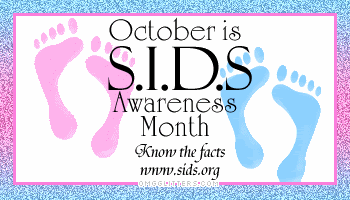 Each year, more than 2,500 infants in the United States die from Sudden Infant Death Syndrome (SIDS), the unexplained, sudden death of an infant under one year old. Researchers are finding that the majority of infant deaths are sleep-related, with nearly 74 percent of deaths in babies younger than four months occurring in bed-sharing situations. Among older infants – those aged four months to 364 days – nearly 59 percent of deaths involve bed-sharing, according to the Journal of Public Health.
Each year, more than 2,500 infants in the United States die from Sudden Infant Death Syndrome (SIDS), the unexplained, sudden death of an infant under one year old. Researchers are finding that the majority of infant deaths are sleep-related, with nearly 74 percent of deaths in babies younger than four months occurring in bed-sharing situations. Among older infants – those aged four months to 364 days – nearly 59 percent of deaths involve bed-sharing, according to the Journal of Public Health.
This October, National Sudden Infant Death Awareness Month, Children’s Healthcare of Atlanta has released guidelines for parents on how to create a safe sleep environment for their babies in order to reduce the risk of sudden infant death.
“SIDS is a terrifying reality that thousands of families have faced as the number one cause of death among infants from one month to one year of age,” says Gary Freed, M.D., D.O., Director of the Children’s Apnea Center and Medical Director of the Children’s Sleep Center at Egleston. “Over the past decade, tremendous research advances have reduced the infant mortality rate resulting from SIDS by more than 50 percent. However, the number of infants dying of suffocation, from sleeping on inappropriate sleep surfaces (adult beds, chairs, sofas, etc.) has dramatically increased.”
Sleep Alone – Infants who share a bed with an older child or adult are at higher risk for injury, suffocation or SIDS.
Back is Best – Always place your child on his back to sleep. The risk of SIDS is doubled for infants who sleep on their stomachs. The American Academy of Pediatrics recommends offering a pacifier when an infant is placed on their back to sleep to reduce the risk for SIDS.
Crib Safety – Remove anything from the crib that can block your child’s flow of air, including all stuffed animals, blankets, pillows and other loose bedding. Do not use crib bumpers or mobiles that your infant can reach. The best place for your child to sleep is in a safety-approved crib on a firm, flat mattress. Make sure the crib slats are no more than two and three-eighth inches apart with fixed sides. Do not place your child on a sofa, soft mattress, pillow or other soft surface to avoid rolling or suffocating between pillows. If you want your infant close to you at night, move his bassinet or crib into your bedroom and place it within arm’s reach.
Comfortable Temps – Do not overheat the room where your infant sleeps. Keep the thermostat set so that it is comfortable for adults who are lightly dressed, usually between 68°F and 72°F and never over 75°F. Instead of using covers in cool weather, dress your baby in a lightweight, one-piece blanket sleeper or sleep sack to help keep him warm.
Swaddle Smart – Swaddling is the practice of wrapping your infant in a blanket or cloth, mimicking the comfort of the womb. If done correctly, swaddling can curb crying and restlessness and promote longer sleep and regular sleep patterns. Leave space in the blanket for the infant’s hips and legs to move. If done incorrectly, it can put too much pressure on the hips and cause problems like hip dysplasia.
Stay smoke-free – Never allow anyone to smoke near your infant. Exposure to secondhand smoke doubles the risk of SIDS, according to the CDC.
Immunize your child – The risk of SIDS is substantially lower in infants who are up to date on their necessary immunizations, according to the CDC.
Educate your sitter – Every parent needs a night out, but before you turn your child over, show your sitter these helpful tips to keep your child safe and secure.
For more details on Children’s tips for safe sleep, please visit www.choa.org/safesleep.

I have a 3-weeks old by and I’ve been co-sleeping with him. Sometimes I just can’t bear to see him sleeping alone. I guess I need to do something about it. Thanks for providing this nice little info.